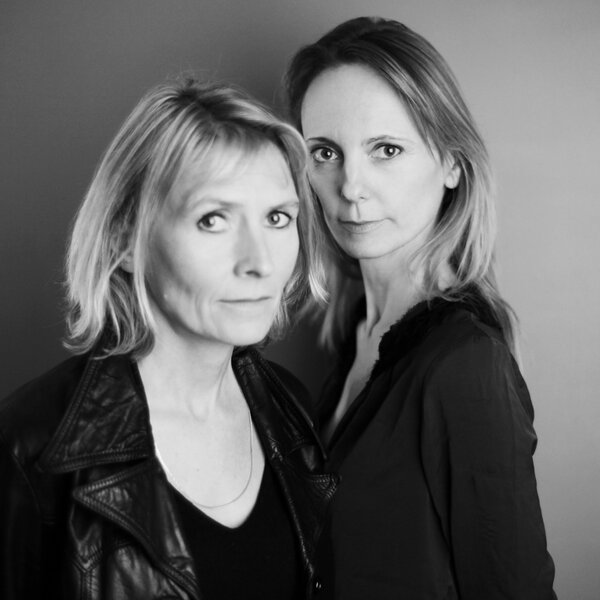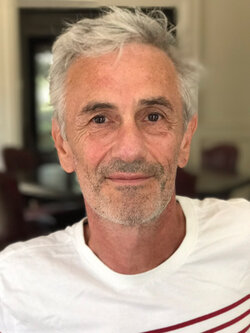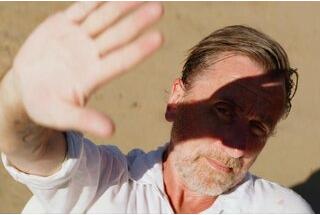Cinematographer Jean-Louis Vialard, AFC, discusses his work on Delphine and Muriel Coulin’s film “The Stopover”
Soldiers at the beachTwo girls, Dawn and Marine, are returning from Afghanistan. They have just experienced six months of tension, horror, and fear. They spend three days in Cyprus in a five-star hotel, as part of what the army calls “decompression, ” where they will learn how to live normally again, to forget the war through repeated group debriefing sessions and relaxation courses, drunken parties and boat trips. But one cannot free oneself of violence so easily.
Starring Soko, Ariane Labed, Ginger Romàn

Stopover
Jean-Louis Vialard : The film was an adaptation of Delphine Coulin’s novel. After 17 Girls four years ago, the two sisters left to work on various projects, including the screenwriting of Samba, the latest film by Olivier Naccache and Eric Toledano. That is why it took a little time for their second film to get started. But once script was written, we began working quickly and found funding within a few months.
The Hotel
Almost the entire film is set in a hotel where soldiers stay for their decompression sessions, and it was hard to find the right place because of how central it is to the film. Initially, we’d thought we’d shoot the film in the actual hotel used by the French army in Cyprus (as presented in the film). But our Greek co-producers asked us to find a local solution, and we found an absolutely perfect hotel in Rhodes. It’s even better visually than the real one, with just a few added props, but absolutely no work on the décor itself.
After a few days in France shooting airline and airport scenes, filming began early in the season, from mid-April to mid-June in Rhodes. We also added a few shots in Cyprus for contextualization.
Virtual reality
I wasn’t personally familiar with this method. I discovered this technology of immersion in virtual reality with direct interaction via programmers for the mission debriefs. This technology is actually used by the army for these decompression sessions, as confirmed to us by our advisors within the army. These parts of the film were managed by Buff Company.
We began working on this six months before shooting began, and I was delighted with their expertise and experience in the field of VR.
Following multiple proposals made by Buff, we established a visual charter for the visual feel of the images to be projected, and adjusted the texture of certain elements as we went forward with the work (such as the snow so that it kept its shape during projection and after capturing the actors in front of the screen) and on the management of the contrast because the projection tends to modify the rendering.
ProRes and HMC
Nowadays, I prefer working on films where we have an overall budgetary envelope for the visuals. This approach is like the one taken with set designers and allows me to better manage my budget and allocate funds as I see fit. On this film, for example, I was able to save about 50,000 Euros by working without a crane or dolly, shooting directly in ProRes without a DIT, and by paying great attention to the workflow. Essentially by precisely calibrating all of the monitors using a dozen LUTs that I am used to using, in order to arrive at a final volume of 4 terabits of dailies.
Another artistic decision that saved us money was that we went without HMC and shot with absolutely no makeup. Since the characters are soldiers returning from a mission, I think the least trace of powder or foundation would have completely ruined the film’s credibility. So we just had a Greek costume assistant who handled the fatigues and the jogging suits (the only costumes worn by our soldiers), and each actor handled his or her own preparation. This is something that gradually became natural, although I must admit that the two directors helped me to accept these decisions.
Amira
At first, I wanted to shoot using an Arri Alexa Mini. Unfortunately, the camera was not available at the beginning of April 2015, and so I chose a Amira that was perfectly suited to being carried on the shoulder and this was very much appreciated by our cameraman. This situation led to my doing a lot of screen-tests in order to create my ProRes workflow, in association with a Zeiss Distagon series, which was much less expensive from our supplier TSF Caméra than the Leica Summilux series that I had initially been planning to use.
Besides a few scenes where the extreme differences in contrast make me sometimes regret that we didn’t shoot in Raw – especially when the sea is backlit by the sun – I was perfectly satisfied with this configuration. In fact, I think that we could absolutely take inspiration from what we used to do in 16mm, where the wide shots were filmed using 35 mm, and go from ProRes to Raw for certain shots or scenes…
The Dardenne Brothers’ operator invited by the Sisters
This is one of the first films where I didn’t operate the camera myself. On this film, the filmmakers wanted to work with Benoît Delvaux, the faithful operator of the Dardenne brothers. He is excellent at operating a shoulder camera. He also uses a system of interlinked metal tubing that allows him to quickly set up a sort of “Maxi Slider” where in hardly three minutes, he’s ready to do a travelling shot over a few metres. On all the indoor scenes of the "debriefs" (shot in Paris in a hotel meeting room), we often worked with two cameras. Benedict would operate the face camera and I would do the lateral shots in motion with this slider system. Although everyone had to find his place within this quartet at first in order to decide how the film would be cut and how each shot would be put into place, I absolutely must salute the beautiful work on composition and camera dynamics on this film.

Radical lighting
Just as we used no makeup and highlighted the raw side of these soldiers, I also adopted a certain radicality in my lighting. Patrick Contes, our exceptional gaffer, allowed me to use LED ambiences that he had created himself from different-sized panels covered in strips of trichromatic LEDs. These panels were controlled by a wireless interface from an iPhone, and could quickly adapt to any situation and even recreate highly saturated colour effects (like in the nightclub scene) where fuchsia and blue mix remarkably well without saturating the Amira’s sensor.
The cicadas were cold
During filming, I already imagined the sun would feel rather cold. White skins and no sunset on the horizon. Perhaps the sole exception being a scene shot at the end of the day, during which the girls go to visit the island with the locals. It was in that direction that colour timing began, and even creating some slightly disturbing effects, such as in the beginning when we discover the characters on the airport tarmac, in that almost cold atmosphere, with the loud song of cicadas in the background. That was the type of uncanny realism, where nothing is really false or naturalistic, that the film was shot. This ambience was, for me, totally in accord with the characters and the story.
(Interview conducted by François Reumont for the AFC, and translated from French by Alexander Baron-Raiffe)
Stopover, by Delphine and Muriel Coulin
Produced by Denis Fred (Archipel 35)
Editing : Laurence Briod
In the portfolio below, see some images from Stopover
 En
En Fr
Fr






